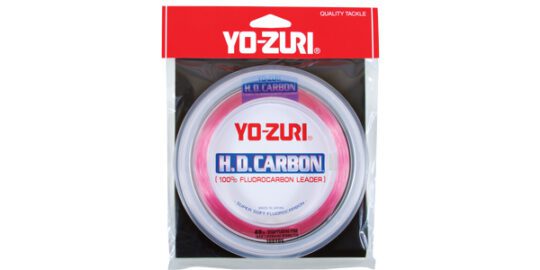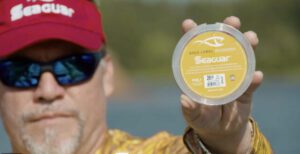For trout fishing, I buy tapered leaders. But for saltwater fishing in the Northeast, I’ve started tying my own leaders in the past year.
Long tapered leaders make sense for many saltwater scenarios such as targeting redfish, bonefish, permit, and sight fishing for striped bass. But shorter hand tied leaders are perfectly fine for most scenarios involving striped bass, bluefish (with terminal wire), and false albacore. A 7 to 8 ft. leader is much easier to cast than a 9 to 12 ft. leader too!

The leader formulas I list below amount to an 8 ft. leader, but you should feel free to experiment. They only require three sections, which means fewer spools and knots than four section leaders, not to mention less time and effort in prep.
As with many fly fishing topics, there are conflicting viewpoints and opinions about leader formulas. I’ve heard that the butt section can be up to half of the total leader length. Using this as guidance, here’s what I’ve been using in 2022:
- 3 to 4 ft. 40 lb.
- 2 ft. 20 lb.
- 2 ft. 15 lb. (16 lb. would be fine too)
A slightly heavier setup would be:
- 3 to 4 ft. 40 lb.
- 2 ft. 30 lb.
- 2 ft. 20 lb.
I’ve seen giant tarpon leaders on 11# rods using a 40lb butt section, so that class sure seems plenty for striped bass fishing. Whether or not you use blood knots, double surgeons knots, or another knot to tie the different classes together is up to you. I’ve been using double surgeons knots with no issues. However, if you wanted to swap 12lb for 15/16lb in the first formula, the blood knot would be appropriate.
In terms of material, this year I’ve been experimenting with Yo-Zuri H.D. Carbon Disappearing Pink Fluorocarbon. The current IGFA All-Tackle Length Fly World Record for Permit was caught using Yo-Zuri leader material just this past February by Tommy Robinson. The guys over at The Saltwater Angler in Key West recommend it. I picked some up this winter and it’s landed a couple decent schoolies for me this spring. The other leader material that I’ve been using is Seaguar Gold Label, which may be the thinnest big game fluorocarbon available on the market.
In my opinion, if there’s one thing you don’t want to skimp on, it’s terminal tackle. An advantage of tying your own leader is that you’ll save money in the long run by not buying tapered leaders.

I prefer fluorocarbon over nylon for freshwater and saltwater for one reason – its strength doesn’t degrade over time. Which means I can buy a spool of it, forget about it in the bottom of a gear bag, and it will be just as effective three years from now as it was when I bought it. I can’t say the same for nylon. Once you’ve broken off a nice fish on an ancient spool of nylon tippet material you’ll know what I mean!

There are a handful of other articles on saltwater leader formulas out there that I’ll let you read, but especially for striped bass I like keeping it simple. A 7 to 8 ft. leader will work fine for any fly line types, especially floating and intermediate. For full sinking line such as an Orvis Depth Charge, a 4 to 6 ft. leader of 2 to 3 ft. 40 lb. and 2 to 3 ft. 20 lb. or 15/16 lb. can be easier to cast and will keep your fly deeper. Find out what works for you, as there are no rules in fly fishing!
If you know how to tie a perfection loop, you can quickly create a strong leader that includes a loop to loop connection which will turnover well with just three spools of tippet. In terms of maximizing storage space, the Yo-Zuri spools are small which is nice, the Seaguar ones are not.
If you’ve never tied a perfection loop before, it’s never too late to start:
Discover more from BlogFlyFish.com
Subscribe to get the latest posts sent to your email.

Full agreement on the simplicity here. Heck, I was in FL in April (snook/ladyfish/reds/jacks etc) and just went 30 for 4 feet and then a few feet of 20. All Flouro. I’ve used that for a while and similar but lighter versions for warmwater fresh water fishing and it works great. Only exception is that sometimes it needs a little more length if things are really clear/calm. But not often.
Glad to hear Will! Thanks for reading.
What about big snook? What do you recommend?
Hey Caz. I’ve only been fly fishing for snook twice. Last time I fished for them we were using 30lb terminal tippet. So I would say a good leader for a floating fly line on a 9 or 10wt rod would be 3-4ft 40 or 50lb butt section, 2-3ft 25-30lb transition section, 2ft 16-20lb for your class tippet, then 12-18 inches of 30lb fluorocarbon.